- | 8:00 am
To solve climate change, it’s not only what we eat, but how we eat
Eating less meat and reducing waste will require a major change in behavior. Designers are starting to envision products that could help.
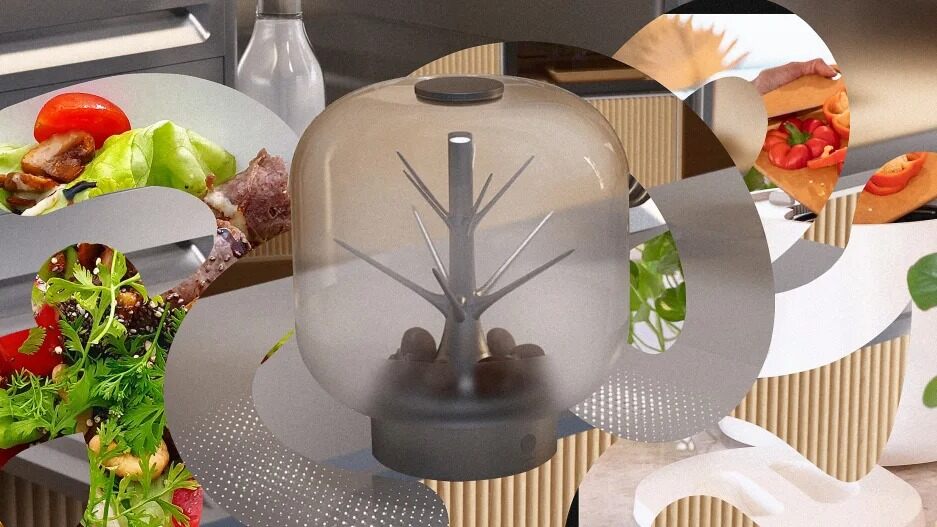
It has been a year of unprecedented food crises. Record heat waves across the Northern Hemisphere have caused extraordinary droughts and wildfires. Grain stuck in war-torn Ukraine has led to extreme food shortages. Inflation and a cost-of-living crisis has forced restaurants to close and families to skip meals just to make ends meet. Even before the events of this year, 10% of the global population went hungry.
So far, much of the conversation has been centered on altering what we eat . . . but what about how we eat? Food needs a rethink, and it’s not an easy task. When it comes to the sustainability challenges, the most privileged are the ones most significantly contributing to the problem. The U.S. tops the global food waste ranking, with roughly 30%-40% of the national food supply wasted annually. But with such privilege comes the ability to explore new technologies and interventions. Innovators are now exploring these challenges at a systems level, looking to find the right leverage point to create a scalable difference.
THE FUTURE OF YOUR KITCHEN
At this year’s Milan Design Week, Swedish appliance brand Electrolux presented GRO: a conceptual future kitchen, helping users cook food that’s optimized for sustainability and nutrition. The science behind the project comes from the EAT-Lancet report, a global collaboration of world-leading researchers in nutrition, health, sustainability, and policy.
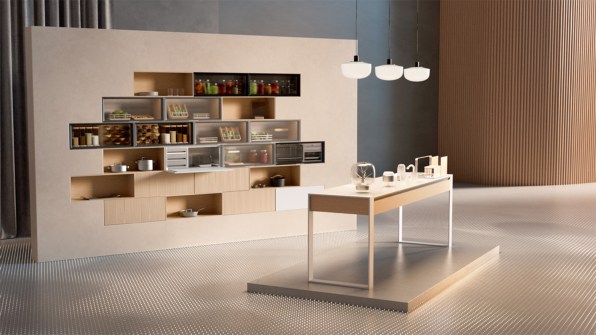
The report proposes the ideal diet, which balances planetary and human health and involves “doubling the consumption of healthy foods, such as fruits, vegetables and nuts and a greater than 50% reduction…of less healthy foods, such as added sugars and red meat.” Considering this is a huge shift in eating habits, the way we cook will have to change, which is exactly what innovations like GRO are helping to achieve.
The kitchen is comprised of nine different modular appliances, including some for fermentation, smoking, and algae production. The point of these appliances is to introduce new cooking processes to the home chef, where users can turn humble vegetables into eco-friendly meals with a depth of flavor; specifically, we are told, umami. A “Jewelry Box” refrigerator module showcases resource-intense ingredients, such as meat and cheese, in an aim to nudge users to buy high-quality proteins in smaller volumes.
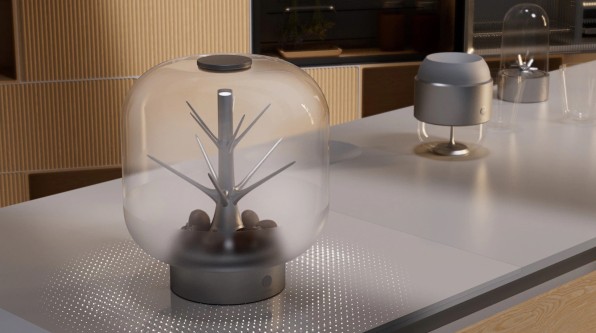
We interviewed Tove Chevalley, head of innovation at Electrolux, who described how they use a behavioral science approach, like nudge theory, combined with collaboration from top chefs and users, in an effort to make “healthy and sustainable eating the preferred choice.” She explained how the project isn’t necessarily about new technology, but more about positively influencing behavior through designed interventions. Although this is currently a conceptual project, the work is already influencing real commercial products in their pipeline. For instance, the nordic smoker would transform plant-based food prep. Current options are largely only available in professional kitchens, or through fairly complicated devices. The Electrolux concept proposes a countertop option which, in an effort to elevate plant-based cooking, may be an upcoming product innovation.
LOOKING BEYOND THE PLATE
Berlin-based “How We Eat” is an educational design project that hosts interactive dining experiences, with the goal of educating participants on complex food systems. Diners enjoy a five-course meal, with each round designed to make a food-based concept tangible. The first course of bread and butter, for example, demonstrates the degenerative nature of the wheat and dairy industries.
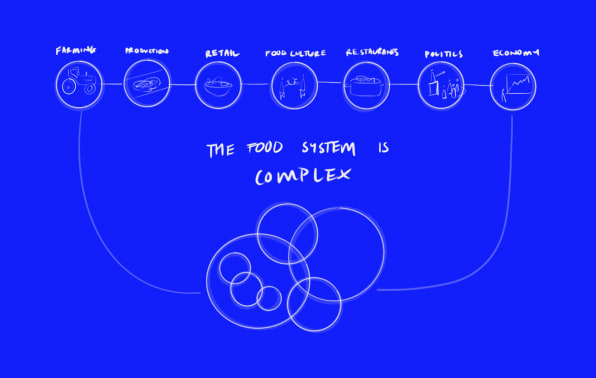
As participants work their way through the meal, the courses and related discussions cover everything from organic farming to GMO, demystifying the jargon with tangible evidence on the plate, as they progress. Users learn of food systems, ranging from “degenerative” to “green” to the holy grail of “regenerative”—techniques that actively improve the ecosystems they depend upon.
For many people, these topics exist in obscurity, somewhere beyond the supermarket. But crises such as the war in Ukraine and climate change are bringing new attention, as they have a very real impact on our lives. Ashley Scarborough, one of the designers of the experience, told us that the project isn’t “pushing an agenda or finger wagging”; it’s quite literally laying it out on the table for an informed discussion. As they scale up, the ultimate goal is to develop a database that links people seeking more sustainable diets to recipes, suppliers, and education. The designers have documented their approach so that others can follow the format of the dinners and host their own, spreading the educational messages far and wide.
REDUCING WASTE
As mentioned earlier, the United States discards more food than any other country. This represents a colossal environmental toll and the economics are eye-watering, with $218 billion worth of food wasted each year.
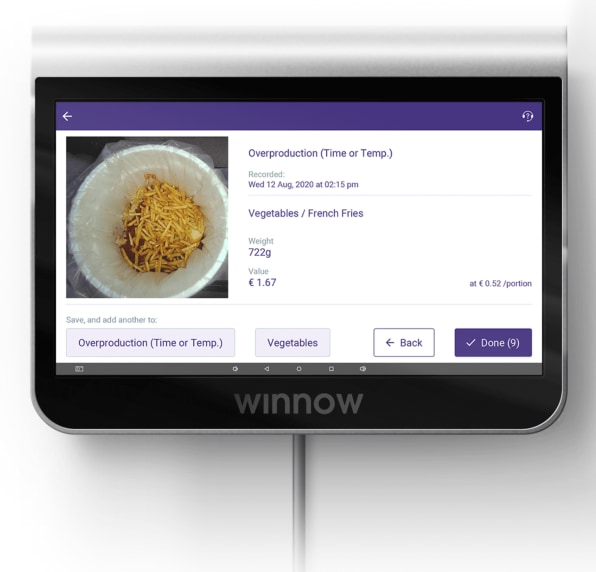
Winnow is bringing AI to the trash can, with a smart food waste system. They’ve developed AI-based tools to track food waste in restaurant kitchens. This consists of a touch screen, mounted above a weight sensing bin, with some smarts in the cloud connecting it all up. The theory is that by accurately understanding the food waste leaving a kitchen, chefs can make better decisions to stop it becoming waste in the first place. It’s working—with the help of Winnow, IKEA UK saved the equivalent of 1.2 million meals in 2020, and Hilton Dubai saved $65,000 through reducing food waste.
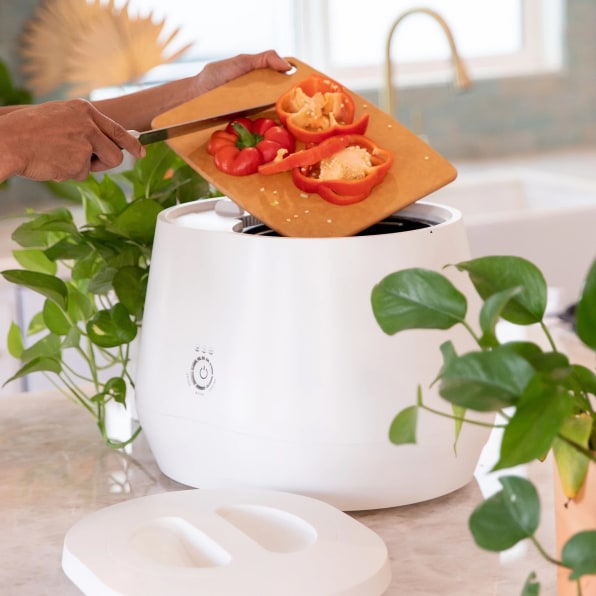
When it comes to food waste at home, we’re seeing an increasing number of solutions that compost food waste in 24 hours, so you can feed your plants and garden with nutrient rich material. The exciting thing about devices such as Nomi is that you can also compost bioplastics in the devices—a feature which is not currently widely available.






































